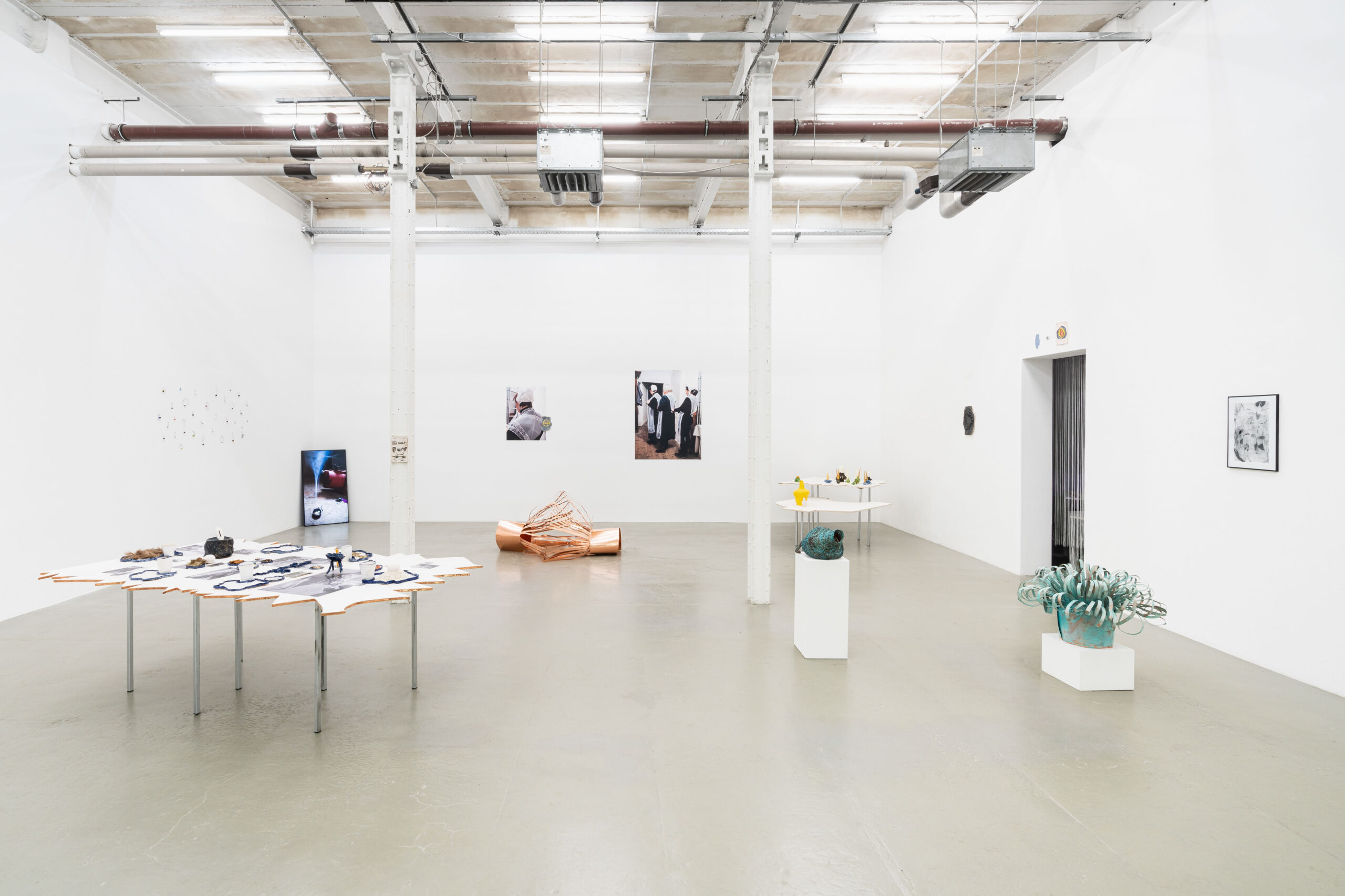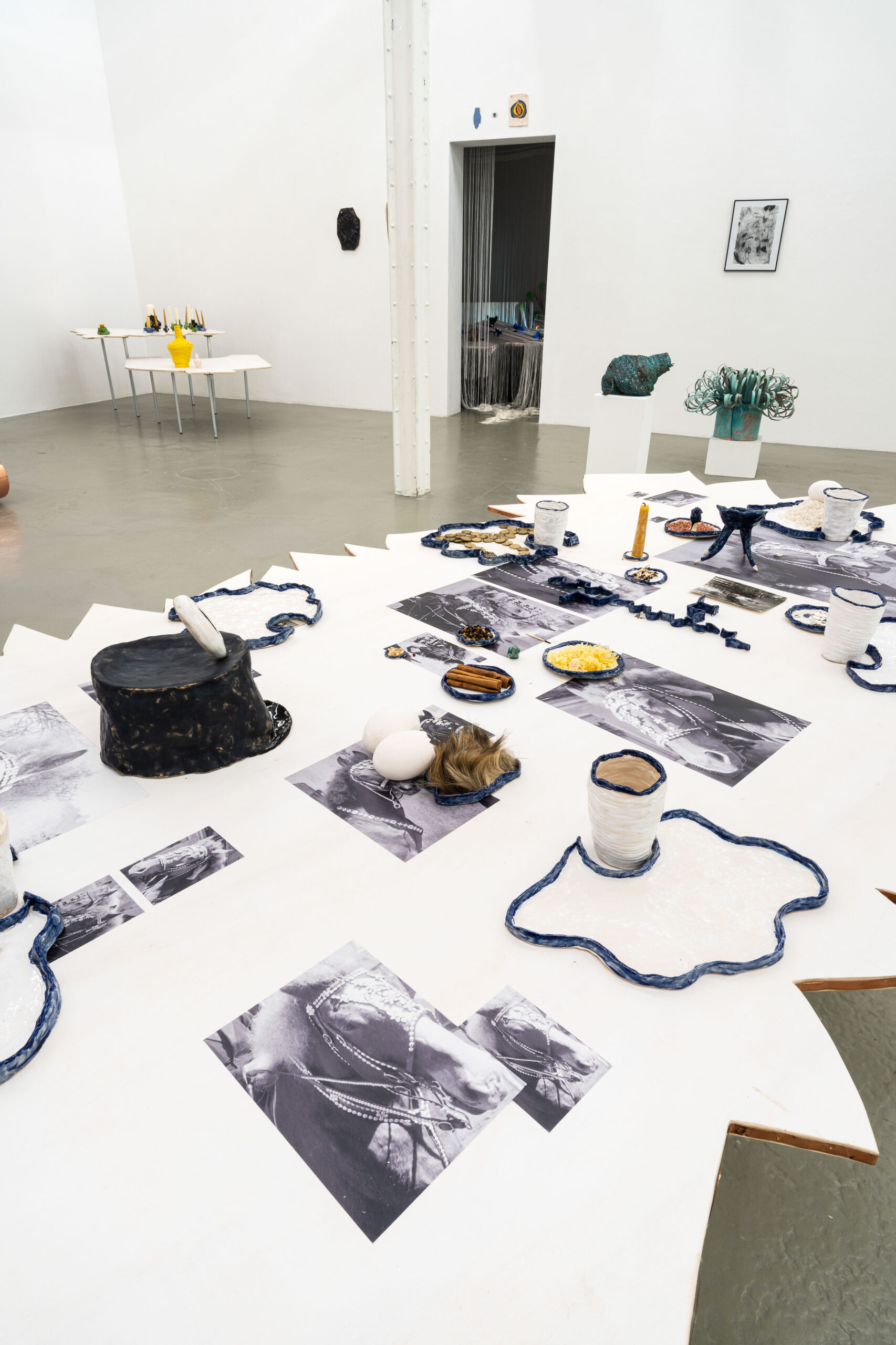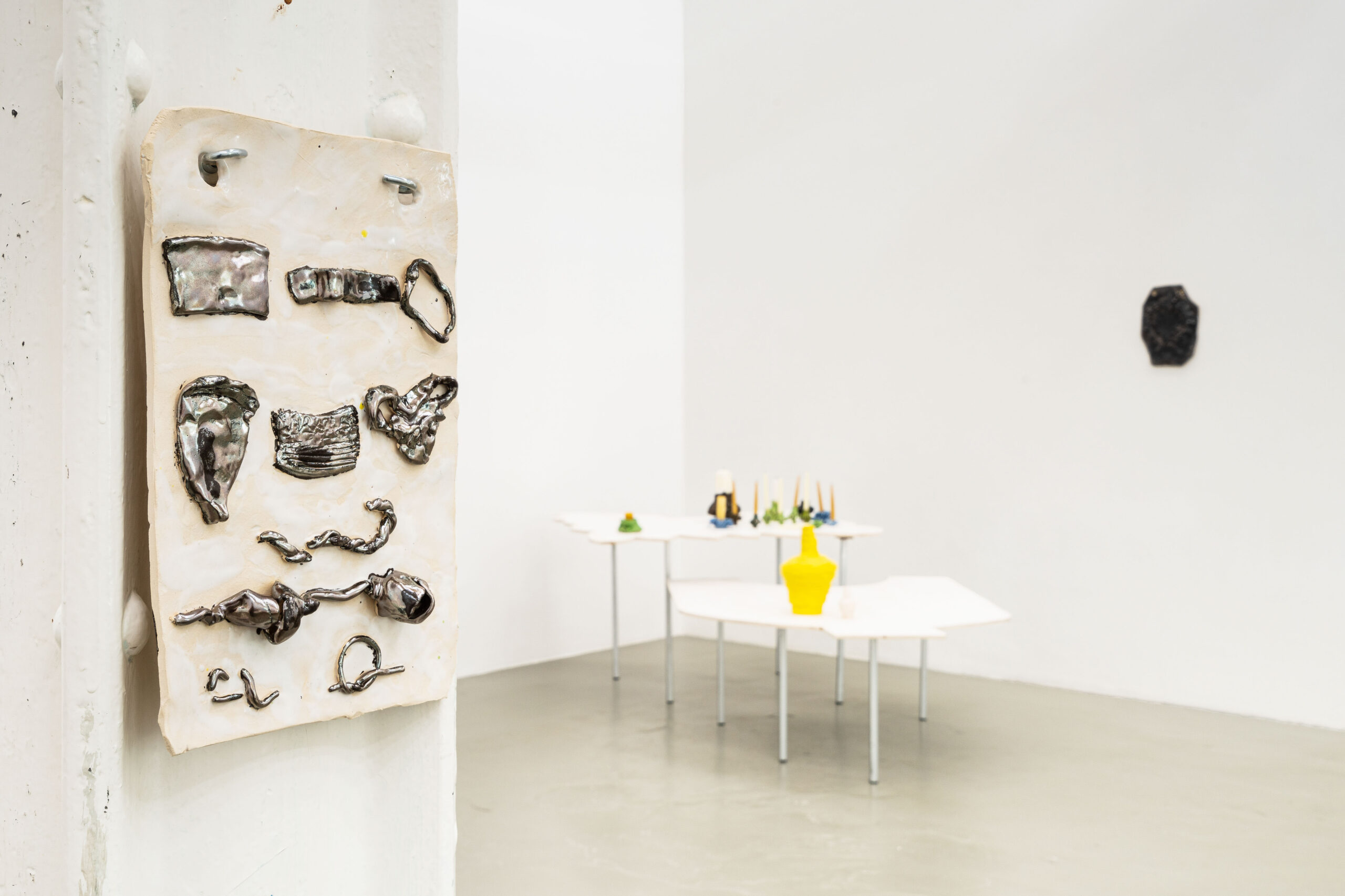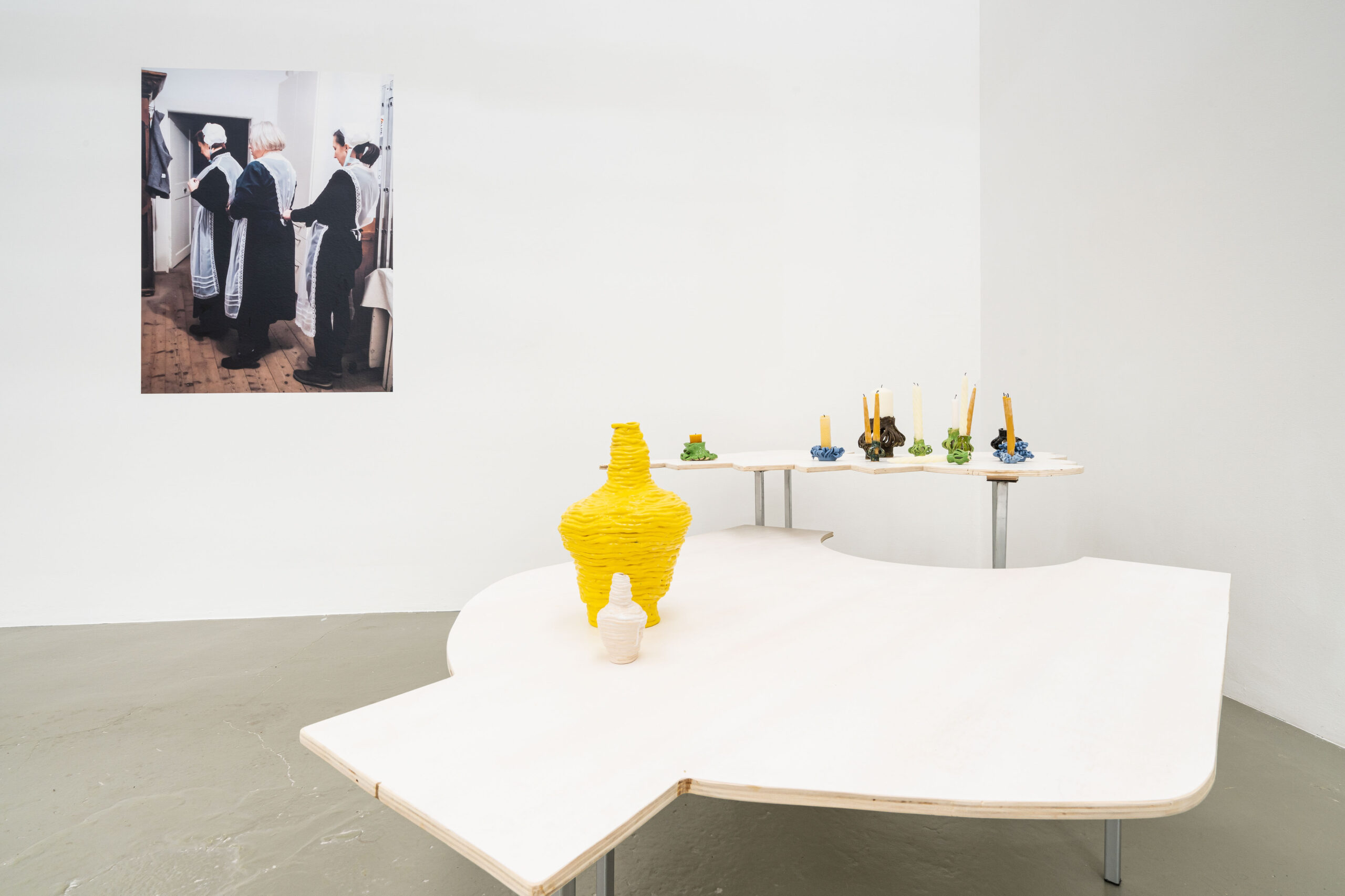
Glitches in the cauriverse
A black and white picture from the 1920s: A procession is seen, three men on horseback, all wearing festive black clothing and top hats, the one in front also wearing a cross, marking the cortege as an Easter procession. The horses are solemnly decorated and coiffed, a picture of village Christian traditions of a bygone era, one might think, until a detail suddenly catches the eye: the harness of the horses is embroidered all over with cowries laid in chains and patterns. A disturbance in the picture, one expects something „exotically“ marked like the Indo-Pacific shell in the souvenir context or in the artistic confrontation of postcolonial criticism, as in the US pavilion at the Venice Biennale in 2022 by Simone Leigh, and not in a picture that is obviously situated in Central Europe and is also a hundred years old.
From a historical point of view, the pictorial elements, which at first glance seem incompatible, fit together: The Sorbian Easter riding has a tradition that can probably be traced back to the pre-Christian Slavic people, and the Sorbian procession can be followed back to the 15th century. And there are grave finds from the early Middle Ages that locate the cowrie north of the Alps. In different cultures it has various functions, is often associated with the vulva or the eye and helps its wearers with defensive spells, fertility rituals or against the evil eye. It reached Lusatia during the migration of peoples in the 6th century, when the Slavs crossed several places on their way where cowries have been found, for example in present-day Bohemia. From the spread that connects the globe as well as the past and present and the various attributions of the cowry snail, the web of history and connotations, Karoline Schneider opens up a „Kauriverse“ in which she artistically and scientifically unites her own Sorbian origins with a cultural-historical mycelium.

And yet the image of the horse harness adorned with cowries fills us with a sense of disturbance. A „cultural flicker“ arises, as the cultural scientist Mithu Sanyal describes this simultaneity, or a „glitch“, as Karoline Schneider puts it. The „glitch“ probably stems from several internalised imprints. On the one hand, today’s gaze is rightly shaped by an awareness of cultural appropriation, especially with regard to exoticising representations and the contextless appropriation of symbols, cultural techniques and materials. At the same time, our perception is still shaped by history, which since the 18th century has attempted to delineate national styles from one another, a method that was transferred to most areas of society in the strengthening exclusive nationalism in the 19th century. And although national styles could never be seriously separated from each other, especially in art, because the world was more globalised early on than one can imagine without the internet and air travel, this fairy tale remains present to this day. Aby Warburg describes this cultural exchange in the lecture „Dürer and Italian Antiquity“ (1905) as „circular processes in the alternation of artistic forms of expression“ and, in terms of pictorial science, expands the geographical exchange to include the temporal linking of different epochs. Another glitch moment is created by the decidedly feminine symbolism of the cowrie as vulva and its use in the patriarchal tradition of Easter riding, in which only men can participate to this day.
Karoline Schneider brings all this historical research and theoretical constructs together and processes them artistically. In her „Kauriverse“, the cowrie snail stands as a starting point and representative for the web of associations and connotations, but at the same time also for her personal memory of growing up with traditions, rites and symbols in an Sorbian community. Her exhibition „sleborny zadk“ („silver butt“) is a collage of many of these links, which she realises both aesthetically and scientifically in a kind of (pop)archaeological installation. The cowrie snail is a first focal point; it can be found on the Sorbian harnesses described above, but also on those of Hungarian and Romanian hussars or in stylised form on the helmet of Princess Viktoria Luise of Prussia, who was the leader of a hussar regiment at the beginning of the last century and wore the uniform of the „skull hussars“. The multiple occurrence of the same symbol shows that its various uses are not separate from each other, but in turn suggest original connections.

Assemblage, glazed ceramics, archival photographies, different materials

ceramic, glazed,
15×23 cm
A second recurring motif are candle sleeves, green paper covers that are distributed in the Sorbian Pietist Herrnhut Brethren congregations at Christmas by ushers in the congregation as drip protection over long white candles. Especially as a counterpart to the male Easter riders, the role of the women and girls called „sisters“ by the community is significant for the female story. Partly greatly enlarged, the sleeves can be found in the exhibition made of ceramic or patinated copper as candlesticks or vase-like objects, also decorated with cowries. Through the enlargement and alteration of the material, their function can only be rudimentarily discerned; they become abstract ornaments whose traditional value, however, is apparent even without knowledge of the Christian background.


A third complex of works brings elements of Sorbian culture into the present resp. into a subcultural context. As part of Kolektiw Wakuum, Karoline Schneider creates further „glitches“ by staging a television programme in which fingernails are decorated in a nail salon using techniques of traditional Sorbian Easter egg design such as wax drawing and dyeing. By transferring traditional cultural techniques into a contemporary, pop-cultural setting, the Kolektiw Wakuum partly expands rigid and folkloristic customs and thus creates points of contact for young Sorbs. By not only creating her exhibition as an artist, but also curatorially adding works by the artists Hella Stoletzki and Anna Barth, Karoline Schneider once again expands the mesh of contexts and influences.
Sophia Pietryga


